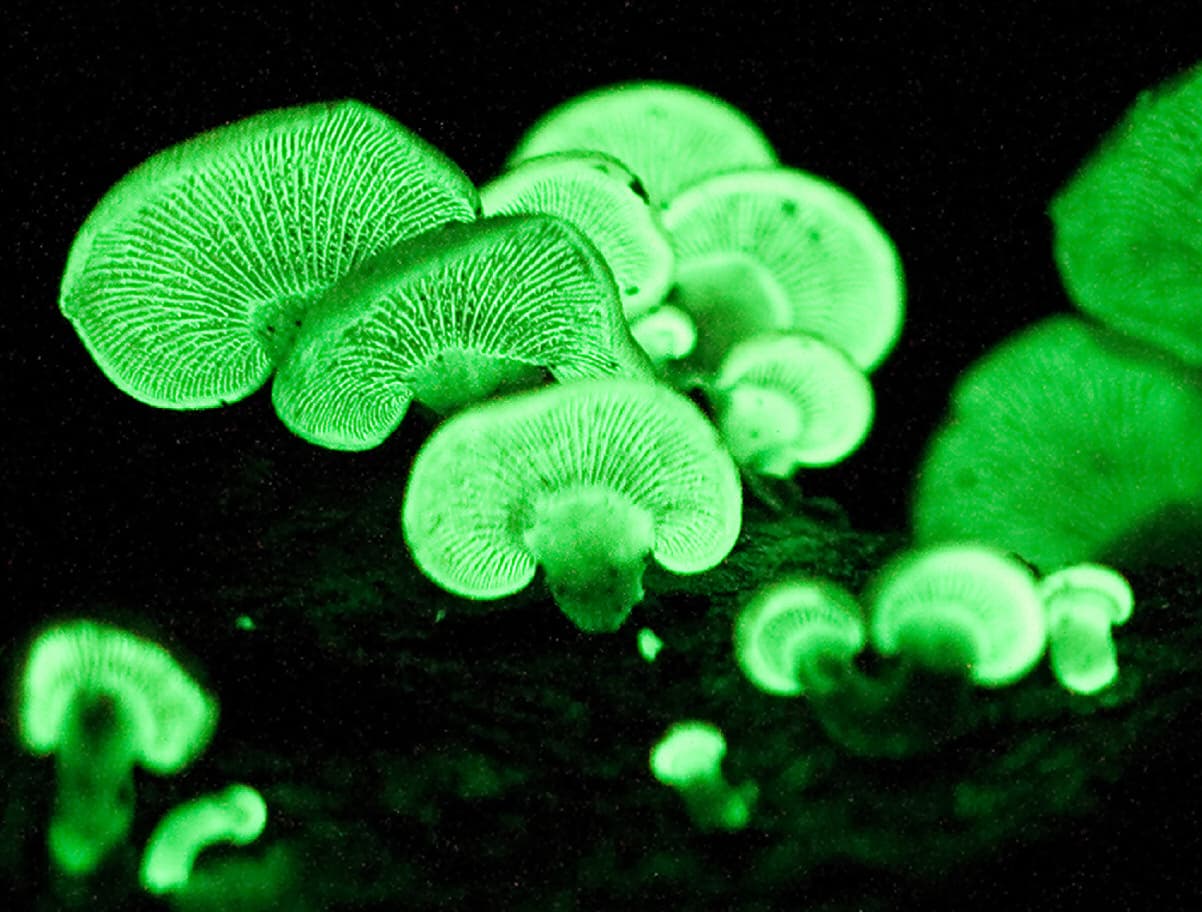"Evolution" is a word that is easily recognizable to many people (even those that refuse to believe it's a real thing). Through evolution, or at least the act of it, creatures in the animal kingdom have gained abilities that far exceed those of you and I. One of those characteristics is bioluminescence, and it can be incredible when a bunch of these organisms are present in one place.
Here are a few great examples of places you can visit to see bioluminescence in action:
The Gippsland Lakes:
Without knowing what you are looking at, this image seems rather perplexing—like someone installed blue twinkly lights in the sand, or someone had dumped a trunk full of broken glow sticks into the ocean. Both things are hilariously wrong. These great images show the work of bioluminescent creatures.
These lakes aren't the only ones that glow in the dark, but they might be the most notable. The waters here are inhabited by huge populations of microorganisms called noctiluca scintillans. These images were taken when the lake was abnormally bright. This has been attributed to a series of brush fires that swept through Australia late in 2006. Once the fires stopped, the immediate area received a record-breaking level of rainfall, which channeled a lot of the run-off back into the lake—nutrients and the like. Said nutrients allowed synechococcus algae to flourish. They, in turn, provided Noctiluca Scintillans—naturally bioluminescent organisms—with sustenance, which gave way to the colorful, overtly-bright blue hue of the Gippsland Lakes.
Even more amazing is people temporarily glow in the dark after rising from the water.
The Bioluminescent Bays of Puerto Rico:
To reiterate, the Gippsland Lakes aren't the only ones that harbor bioluminescent creatures. Puerto Rico is home to three of them (or bays, to be more specific), one off La Parguera, another in La Laguna Grande, and finally, "Mosquito Bay." Their glow is generated by dinoflagellates, or oceanic plankton, that tend to be less productive than other bioluminescent organisms.
It's a good thing they are so prevalent. Once they are activated by touch, they can only bioluminate for a split second before they fade away. Yet, their glow is still highly perceivable to the human eye, thus we see the greenish-blue hue of their flashes quite clearly.
One of the lakes located off the northeastern coast of Puerto Rico ignited a mystery back in 2013. Out of nowhere, the lake "turned off" or "went dark." Biologists and environmentalists have laid the blame squarely at the feet of a neighboring water treatment plant. Another blames construction run-off. Whatever the case, we need to do whatever it takes to protect regions such as these, the ones that highlight the wonderful diversity of nature.
The Glow-Worm Caves of New Zealand:
Enjoy this article? Check out; "6 Beautiful Places on Earth (That are Secretly Horrifying)" Or our list about the most incredible places on Earth.
Share This Article
